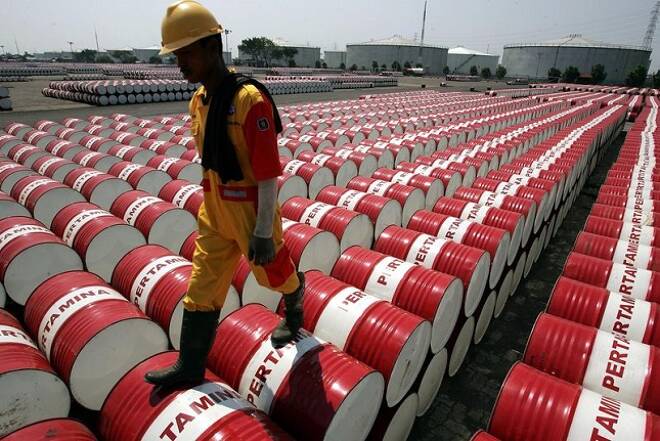Advertisement
Advertisement
Oil Outlook – OPEC Extends Productions Cuts
By:
Oil prices were volatile on this morning as traders reacted to comments from OPEC delegates regarding their highly anticipated decision. Now, an OPEC
-
Oil prices were volatile on this morning as traders reacted to comments from OPEC delegates regarding their highly anticipated decision. Now, an OPEC delegate has informed reporters that the group, as expected, has decided to extend its oil output cuts for an additional nine months. How do you see this impacting the price of oil further?
Answer: OPEC’s decision to extend the current cap on production is ultimately bearish for crude. U.S shale production is on the rise and is forcasted to continue increasing, the continued increase in active rig counts supporting forecasts, the U.S looking to reverse the market share war launched by the Cartel back in 2014.
The markets were hoping for a further cut in production to support a near-term rebalancing and until there are further cuts, the outlook for crude will remain bearish, the disappointment evident in the market response to the 9-month extension without deeper cuts.
We will need to consider global demand over the next 9-months, but as we have seen over the last 24-months, the market’s obsession with the supply side is likely to persist, so for now it’s ultimately bearish for crude oil prices, with the markets likely to become particularly sensitive to data out of the U.S on production volumes, active rig counts and inventories.
-
Do you think OPEC can be successful in their targets?
Answer: It will likely be a challenge for OPEC to maintain its current level of compliance, with concerns over loss of market share likely draw certain members and non-members into breach of an extended agreement. The concerns over compliance will likely be bearish for crude oil prices over the near-term, with the markets likely to be wanting to see how compliant member states remain, particularly should crude oil prices begin to rebound, many members of the Cartel in need of oil revenues, in the wake of the oil price depression that hurt many a current account.
Producers will also be wary of the U.S and the more the U.S cranks up production, the more likely it will be that compliance levels begin to fade.
-
The White House plan to trim the national debt includes selling off half of the nation’s emergency oil stockpile and the entire backup gasoline supply. What type of impact do you think this would have on the market?
Answer: We’ve seen the markets largely ignore the news hitting the wires, with the U.S administration’s success rate in getting policies passed through easing any immediate concerns over the U.S flooding the markets with U.S oil. Obviously it will ultimately be bearish should there be an agreement to sell of the emergency stockpile, though how bearish will depend on the global economic environment and outlook, though as things stand, demand is unlikely to be strong enough to absorb the additional supply, thus bearish, though I have doubts that this will be approved.
-
According to Standford University Economist, Tony Seba, Oil demand will peak in 2020-2021 and will go down 100 million barrels, to 70 million barrels within 10 years. What are your thoughts on this forecast?
Answer: The outlook is quite optimistic for those in favor of a shift towards clean energy, particularly when considering the continued urbanization ongoing in larger nations such as China and India, clean energy unlikely to be widespread within the next 3-4 years despite the advances made in the technology to make it more affordable.
BP recent released projections on oil demand from China, forecasting that China’s energy mix will see a decline in demand for coal, while oil will contribute to 19% of the energy mix between now and 2030, essentially unchanged, so I would consider the 100m barrel decline to be overly optimistic.
About the Author
Bob Masonauthor
With over 20 years of experience in the finance industry, Bob has been managing regional teams across Europe and Asia and focusing on analytics across both corporate and financial institutions. Currently he is covering developments relating to the financial markets, including currencies, commodities, alternative asset classes, and global equities.
Did you find this article useful?
Latest news and analysis
Advertisement
